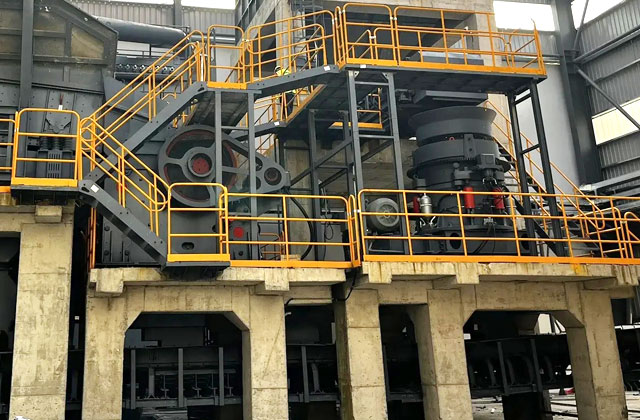A rock crusher is a machine designed to reduce large rocks into smaller rocks, gravel, or rock dust. Crushers are essential equipment in the mining, quarrying, and construction industries, as they enable the processing of raw materials to create a product that can be used for a variety of applications. There are several types of rock crushers, each designed for specific tasks and materials.

Types of Rock Crushers
There are several types of rock crushers, each suited for specific applications and materials:
- Jaw Crushers: These are the oldest and one of the simplest types of rock crushers. Jaw crushers consist of two jaws, one of which is stationary and the other is movable. The movable jaw exerts force on the rock by forcing it against the stationary plate. The space at the bottom of the “V” aligned jaw plates is the crusher product size gap, or the size of the crushed product from the jaw crusher. The rock remains in the jaws until it is small enough to pass through the gap at the bottom of the jaws.
- Gyratory Crushers: A gyratory crusher is similar in basic concept to a jaw crusher, consisting of a concave surface and a conical head; both surfaces are typically lined with manganese steel surfaces. The inner cone has a slight circular movement, but does not rotate; the movement is generated by an eccentric arrangement. As with the jaw crusher, material travels downward between the two surfaces being progressively crushed until it is small enough to fall out through the gap between the two surfaces.
- Cone Crushers: Cone crushers are a type of gyratory crusher with less steepness in the crushing chamber and more of a parallel zone between crushing zones. They are used for secondary, tertiary, and quaternary crushing. Cone crushers are distinguished by their unique crushing processes and are commonly used in aggregate and mining industries.
- Impact Crushers: These are used for softer materials such as limestone. Impact crushers use mass and velocity to break down feed material. In these machines, the material is repeatedly thrown against the stone anvils, each impact resulting in a finer particle size. The primary impact crusher provides high reduction ratios and produces precisely shaped, cubical end products.
Key Components
- Feeders: These control the flow of material into the crusher. They are vital for maintaining a consistent and even feed to the machine, which ensures efficient and effective crushing.
- Conveyors: These transport the crushed material to different stages of processing. They are essential for moving large volumes of material efficiently.
- Screens: Screens are used to separate crushed material into different size fractions. They help ensure the end product meets required specifications.
Key Features and Considerations
- Capacity: The capacity of a rock crusher is measured in tons per hour. It indicates how much material the machine can process within a given time. Higher capacity machines are typically used for larger projects.
- Feed Size and Output Size: The maximum size of the raw material that the crusher can handle is called the feed size. The desired size of the crushed output is the output size. Different crushers have different capabilities in terms of feed size and output size.
- Mobility: Some crushers are stationary, while others are mobile and can be moved to different locations as needed. Mobile crushers are often used in mining and construction sites where materials are spread out over large areas.
- Power and Efficiency: The power consumption and efficiency of a crusher are important factors to consider. Efficient machines reduce operational costs and environmental impact.
- Durability and Maintenance: Crushers must be durable to withstand the harsh conditions they operate in. Regular maintenance is crucial to keep the machines running smoothly and to extend their lifespan.
Rock crushers play a pivotal role in various industrial applications, transforming large rocks into usable materials. Understanding the different types of crushers, their components, and operational principles can help in selecting the right crusher for specific needs, optimizing performance, and ensuring safety and efficiency in operations.

